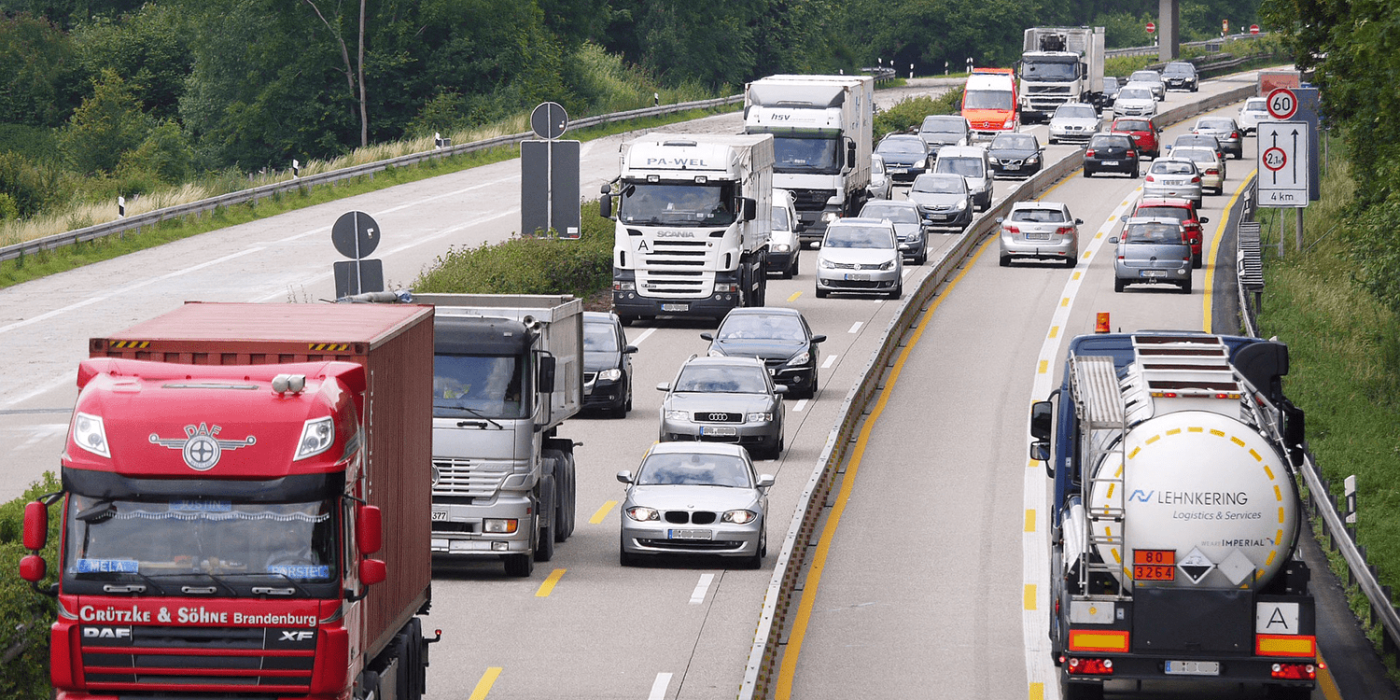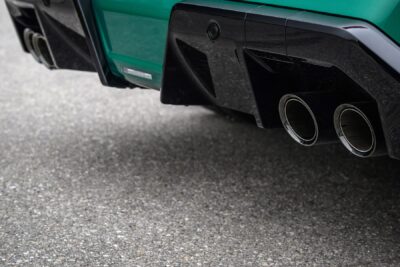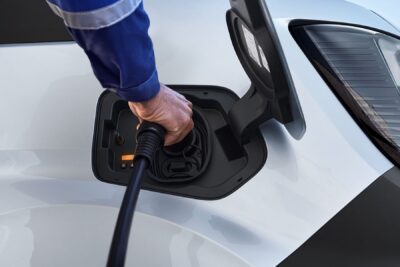EU Commission lays out new truck and bus emission targets
The EU Commission’s expected draft legislation on emissions of heavy goods vehicles has arrived, requiring new trucks to cut emissions by 90% by 2040 and all new city buses to have zero emissions from 2030. Still, the draft falls slightly short of delivering a fully effective ban of ICE trucks.
The good news first – the EU Commission proposes that new heavy trucks and buses must cut nearly all CO2 emissions by 2040. The proposal also replaces the EU’s current shorter-term requirement that manufacturers must ensure a 30% reduction in CO2 emissions by 2030 compared to 2019/2020 levels. The new interim targets call for reducing tailpipe emissions by 45% by 2030 and 65% by 2035.
Moreover, city buses will have to be zero-emission by 2030, with the Commission assuming that the smaller vehicles “already account for a considerable share of the new fleet in several Member States”. City buses were also well suited for faster conversion to zero-emission mobility because they run on short, fixed routes and can charge at the depot, so the argument was made in the draft.
The new measures are tighter. At the same time, the 90% target falls short of the 100% zero emissions goal that the Benelux countries and Denmark called for last month, echoing similar demands by environmental NGOs and zero-emission vehicle manufacturers. They “called for the greatest ambition,” the Commission admits when referring to the consultations, before pointing out that some vehicle manufacturers, transport operators and suppliers of fuels supported “less ambitious targets”.
However, choosing to compromise slightly at 90% also means that the EU Commission has missed a chance to effectively ban ICE truck sales by 2040- yet. EU climate policy chief Frans Timmermans said the bloc had not proposed a 100% emissions cut because of uncertainty about when zero-emission technologies will be available for trucks of all kinds. “We will eventually have to move to a 100% target,” he added when speaking to Reuters.
Such a target has made another step today in the passenger car segment. As proposed in the last draft by the Commission, the EU Parliament today green-lighted the respective proposal, which will now be handed to the member states. The deal for cars and light commercial vehicles to become all zero emission by 2035 also includes a new methodology for assessing CO2 emissions throughout the entire life-cycle of a vehicle.
EU Commission leaves some room to manoeuvre
Back to the heavy-duty vehicles – the now set interim targets also fall short of market estimates delivered by external organisations. Agora Verkehrswende, for example, advocated for bringing forward the 30% target to 2027 and setting a 65% reduction for 2030. Price Waterhouse Coopers had come to similarly optimistic forecasts when looking at the current speed of the logistics industry moving forward with decarbonisation, as reported.
In its current form, the draft leaves room for polluting trucks to still be sold in 2040, and environmental groups say new CO2-emitting trucks registered by that time would still be on the road in 2050, muddling the bloc’s agreed goal to reach net zero emissions by that date.
“Polluting trucks will continue to be sold for years longer than necessary, making the EU’s net-zero goal impossible,” Fedor Unterlohner, freight manager at Transport & Environment, told Reuters.
At the same time, the Commission added its wish to review the rules in 2028 regarding the effectiveness and impact and to submit a report to the European Parliament and the Council, accompanied by a proposal for amending the regulation where appropriate. This could, for example, take into account technological advances or new measurements and perhaps the final blow to combustion technology.
As for the medium term, trucks in the EU run on average for 14 to 20 years. Looking at the in-depth life cycle analysis as made in a recent ICCT study ahead of the draft’s presentation, the International Council for Clean Transportation found that battery-electric vehicles were presently superior to all other technologies in reducing greenhouse gas emissions in line with EU climate targets. Fuel-cell-electric solutions were facing environmental challenges concerning hydrogen production for years to come, so the researchers, thus diminishing the technology’s current potential to reduce GHG emissions effectively.
About upcoming purchase decisions, the ICCT’s programme manager, Felipe Rodríguez, told electrive clearly: “Environmentally conscious fleets can rest assured that they are making the right decision in procuring battery electric trucks today. On the other hand, those betting on low carbon fuels should revise their decarbonisation strategy.”
As for the draft legislation, the EU Commission essentially leaves the choice of zero-emission technology to the market.
At the same time, the new draft excludes vehicles for use by civil protection, fire or emergency services and armed forces. These are not subject to the CO2 emissions targets, writes the EC – “if a Member State so indicates in the registration and reporting process”.
The targets also do not apply to special purpose, off-road, and vocational vehicles, such as mobile cranes, forestry or agricultural vehicles. Further exemptions may be made for companies registering less than 100 new heavy-duty vehicles in the EU, according to a new Article 6b.
As expected, e-fuels, which some parts of the German government had desperately wanted, will play as good as no role under the new regulations. The Commission also rejects the crediting models put forward by the e-fuels industry as they would be “neither cost-effective for producers nor for operators and society as a whole”. Moreover, such mechanisms would blur the responsibilities of different actors for the goal of climate neutrality and increase the administrative burden. Synthetic fuels need five times as much electricity for their production as battery-only propulsion.
Emissions must still be measured
While heavy goods vehicles make for only about two per cent of vehicles on the road, they account for 25% of transport emissions and for over 6% of total EU greenhouse gas (GHG) emissions, according to the Commission, so there is a huge chance to get the EU in line with the Paris Agreement and the Fit for 55 package.
However, calculating emissions of any “fuel” type is complicated. The draft here refers to a “well-established system” already being in place” with regard to previous regulations. Member States and manufacturers annually report the CO2 emissions and fuel consumption of newly registered heavy-duty vehicles to the Commission.
Still, this reliance on emission measurements alone may have a weakening effect not only in that this may leave room for error in calculations but since the draft fails to set vehicle targets, e.g. aiming for a number of electric trucks on the road at certain points.
This approach was, for example, called for by Daimler Truck on an industry panel, where executives wanted to see “a precise share of ZEV vehicles in the market set by policy market, not a CO2 reduction target because planning security is missing today.” This could also include skipping Euro-7 entirely, so Daimler, in particular, in the city bus segment.
The new draft does include a recommendation for a “mandatory minimum share of zero-emission urban buses that should reflect the societal need for affordable public transport, including in rural areas,” but does not specify such a share.
The Commission further states that the new draft provides “important synergies” with the Euro 7 emission-type approval proposal. “This is particularly important since even zero-emission vehicles still emit microplastics from tyres and particles from brake systems,” so the EC. They propose to regulate these non-exhaust emissions in Euro 7.
The European Parliament and EU member states must negotiate and approve the rules before they come into force. This will be marked by publishing in the Official Journal of the European Union and is expected in July.
europa.eu (complete draft), europa.eu (PI), europa.eu (fact sheet), europa.eu (EU Parliament on passenger cars)





0 Comments